 |
 |
 |
| |
Obesity Plus High Liver Fat Boost Odds of Hospital Admission With Severe COVID-19
|
| |
| |
AASLD The Liver Meeting Digital Experience, November 13-16, 2020
Mark Mascolini
In people with more than 10% liver fat, obesity more than doubled the odds of having COVID-19 symptoms when testing positive for coronavirus infection and tripled chances of hospital admission with severe COVID-19 [1]. These results of a UK Biobank analysis found that obesity alone, without high liver fat, does not raise chances of either of these outcomes.
Prior research in the UK Biobank found that chronic liver disease boosts the risk of COVID-19 1.6-fold, a rate similar to the COVID-19 risks associated with male sex, diabetes, hypertension, and smoking. Other work found that people admitted to the hospital with COVID-19 often have abnormal liver function. A 1611-person Latin American study also presented at the AASLD Liver Meeting determined that abnormal liver function tests upon hospital admission with COVID-19 inflate chances of severe COVID-19 and death even in people without diagnosed chronic liver disease [3].
Researchers at Perspectum Ltd and Virginia Commonwealth University conducted this study to further analyze the impact of liver disease on development of symptomatic or severe COVID-19 [1]. They analyzed participants in the UK Biobank, the biggest deep-phenotyping and -genotyping study in the world. The analysis relied on quantitative MRI-based LiverMultiScan, results of which correlate with histologic markers of liver disease. This approach, the researchers said, allows a population-level study that would not be possible if everyone had to have a liver biopsy. Of 41,791 LiverMultiScans available through September 2019 (before the pandemic arrived), 931 came from people subsequently tested for SARS-CoV-2, the coronavirus that causes COVID-19. Of those 931 people, 106 (11%) tested positive for COVID-19 and 48 (5% of 931) got admitted to the hospital.
The 106 people who tested positive for SARS-CoV-2 had a median age of 61, compared with 68 for the 825 people who tested negative for coronavirus infection. Respective proportions of men were 59% and 49% and of whites 82% and 88%. Only 1% of the COVID-19 group versus 5% of the group without COVID-19 had diabetes. Median body mass index (BMI) was similar with and without COVID-19 (26.8 and 26.6 kg/m2). Similar proportions of people with and without COVID-19 had an MRI PDFF-measured* liver fat content at or above 5% (32% and 31%), and similar proportions had fibroinflammation (cT1 at or above 825 ms): 3.8% and 3.3%.
Higher proportions with liver fat content at or above 10% (versus lower) had symptoms when diagnosed with COVID-19. In univariate analysis, liver fat at or above 10% raised odds of testing positive for symptomatic COVID-19 by about two thirds (odds ratio [OR] 1.66, 95% confidence interval [CI] 1.2 to 2.77), while more than doubling the odds of hospital admission with severe COVID-19 symptoms (OR 2.17, 95% CI 1.04 to 4.52). Other variables linked to hospital admission with severe COVID-19 in this univariate analysis were higher BMI, male sex, and non-Caucasian race/ethnicity.
In multivariate analysis, nonobese people (BMI below 30 kg/m2) did not run a higher risk of testing positive for COVID-19 with symptoms or a higher risk of hospital admission with severe COVID-19. And obesity in people with liver fat below 5% was not associated with higher odds of these two outcomes. But obese people with liver fat content at or above 10% had more than doubled odds of testing positive for COVID-19 with symptoms (adjusted OR [aOR] 2.31, 95% CI 1.27 to 4.23, P = 0.006). And obese people with 10% or greater liver fat had tripled odds of hospital admission with severe COVID-19 (aOR 3.06, 95% CI 1.34 to 7.01, P = 0.008).
The researchers noted that more than 11% of people in the United Kingdom have 10% or greater liver fat and an obese BMI. They concluded that in people with low liver fat, obesity alone does not boost odds of getting diagnosed with symptomatic COVID-19 or getting admitted to the hospital with severe COVID-19. But obesity plus high liver fat posed high clinical COVID-19 risks in this population. Those findings, they proposed, "highlight the value of identifying this high-risk subpopulation with noninvasive imaging to guide clinical and lifestyle interventions."
*Magnetic resonance imaging proton density fat fraction.
References
1. Roca-Fernandez A, Dennis A, Nicholls R, et al. Non-alcoholic fatty liver disease (NAFLD) associates with higher risk of developing symptomatic COVID 19 infection-initial UK Biobank observations. AASLD The Liver Meeting Digital Experience, November 13-16, 2020. Abstract 104.
2. Raisi-Estabragh Z, McCracken C, Bethell MS, et al. Greater risk of severe COVID-19 in black, Asian and minority ethnic populations is not explained by cardiometabolic, socioeconomic or behavioural factors, or by 25(OH)-vitamin D status: study of 1326 cases from the UK Biobank. J Public Health (Oxf). 2020;42:451-460. doi: 10.1093/pubmed/fdaa095.
3. Mendizabal M, Ridruejo E, Piņero F, et al. Abnormal liver function tests on admission are associated with increased mortality in hospitalized patients with COVID-19: preliminary results from a large Latin American cohort. AASLD The Liver Meeting Digital Experience, November 13-16, 2020. Abstract 107.
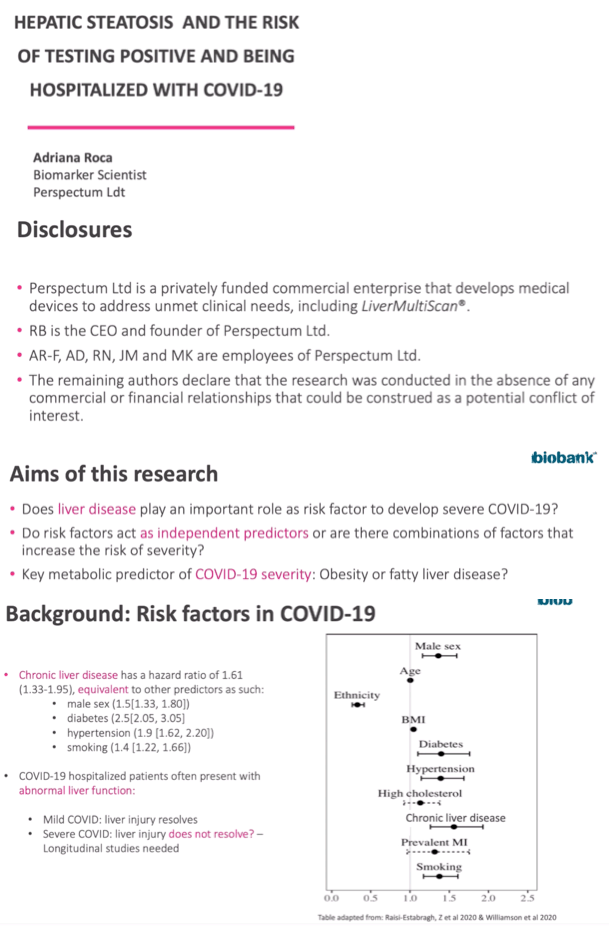
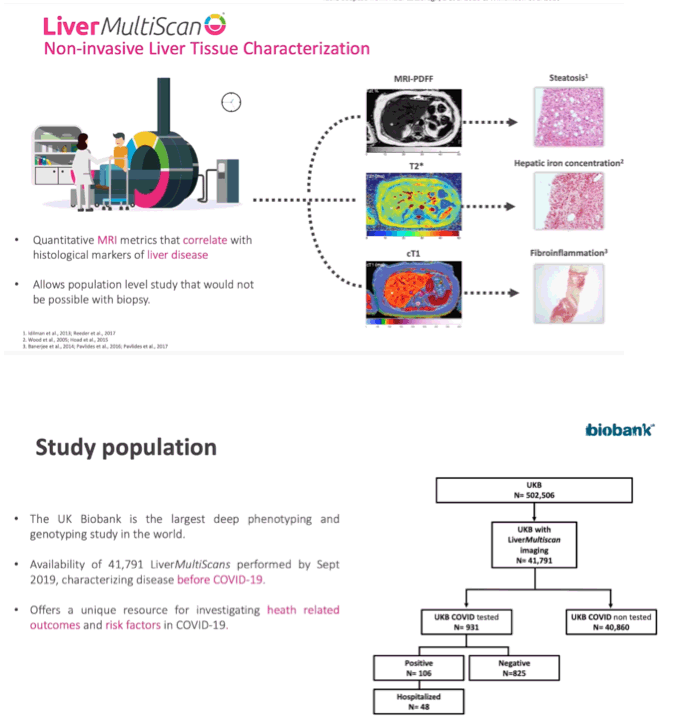
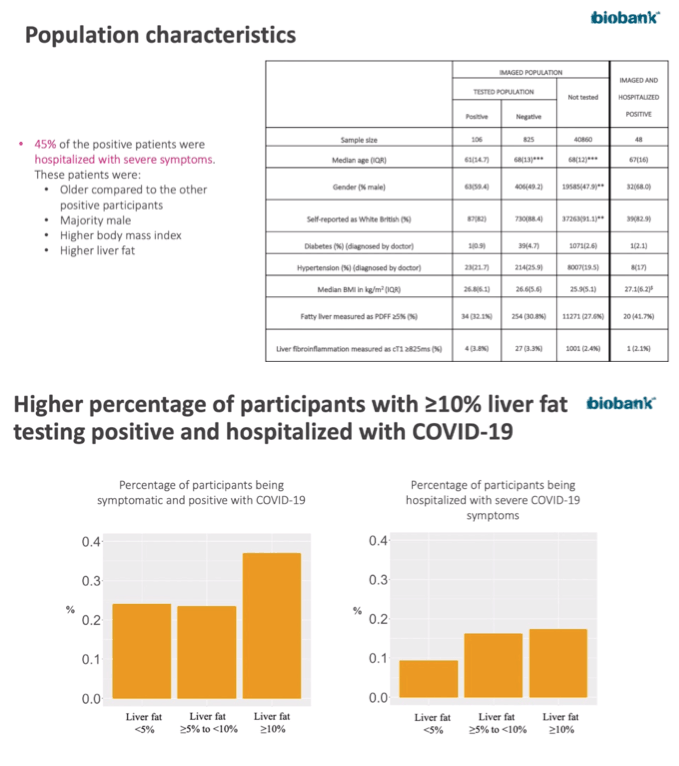
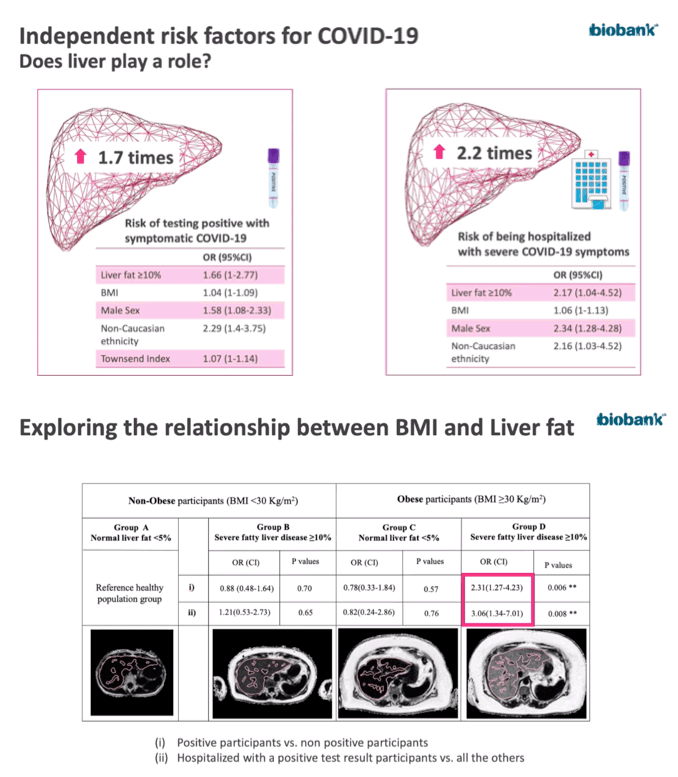
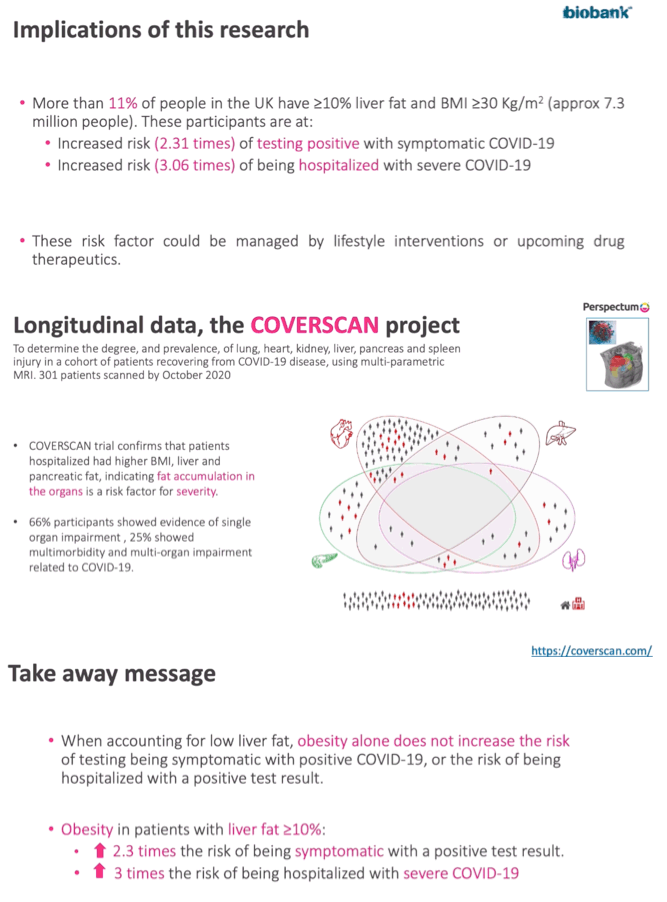
|
| |
|
 |
 |
|
|